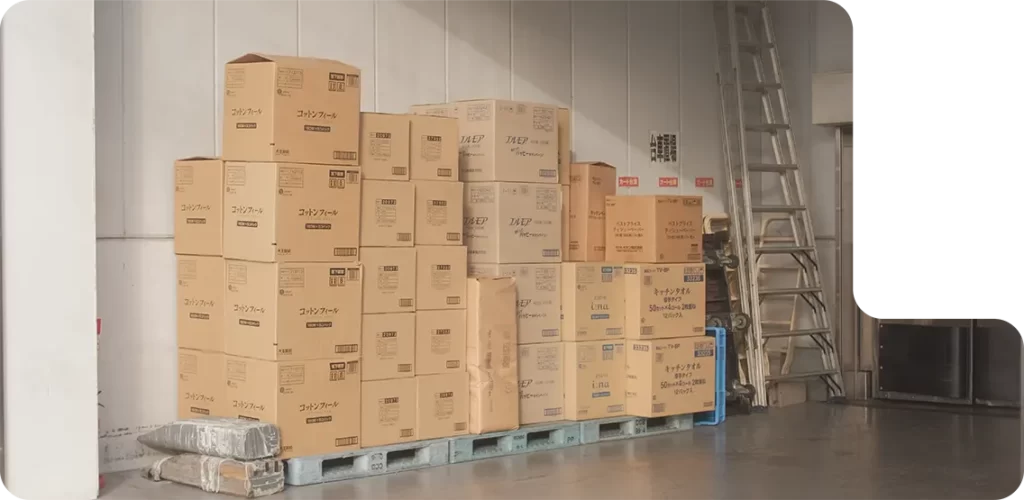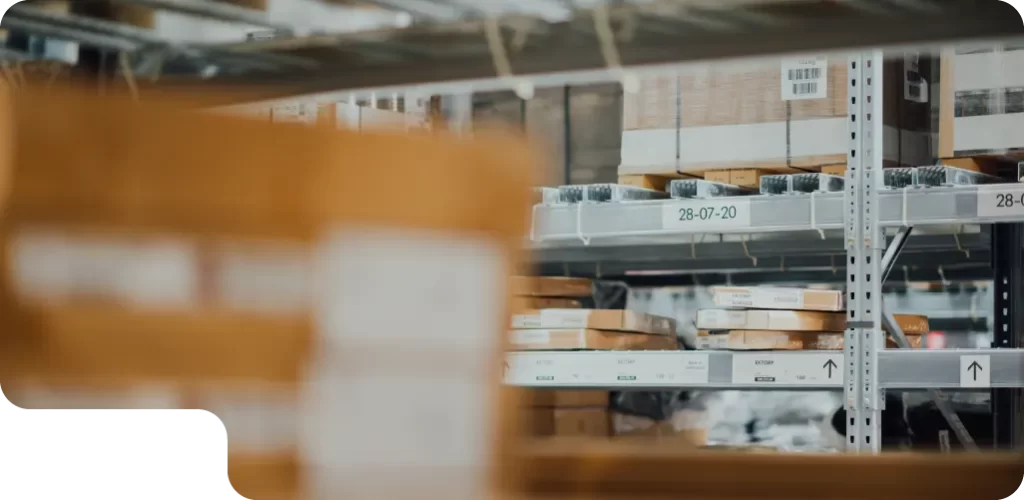Table of Contents
More Inventory Content
Get the latest e-commerce industry news, best practices, and product updates!
Table of Contents
More Inventory Content
Share This
Get the latest e-commerce industry news, best practices, and product updates!
Table of Contents
Share This
More Inventory Content
Get the latest e-commerce industry news, best practices, and product updates!
A company is a vast assembly of different commercial machinery to ensure better products, services, profits, and customer satisfaction. In this fast-paced world, periodically taking inventory of all transactions and product details are outdated and primitive. Although some may argue that the old ways are the best, it doesn’t deny that real-time mechanisms are more effective, be it real-time metrics, marketing, or even communications.
Companies make smarter decisions about the future if they have better access to customers and business associates. Real-time inventory management is a critical tool in all business types. It offers several advantages to help a company grow. How? Let’s find out in this article.

What Is Real-time Inventory Management?
Real-time inventory management, as the term suggests, is taking inventory of a company’s transaction details using automated software. It gives the company immediate and real-time information about inventory activity. It’s a method to monitor transactions, react quickly to supply chain needs, and thus meet customer demands.
Earlier, most companies used to periodically update their inventories at pre-determined intervals, primarily using inventory counts, but this led to the loss of details and affected future aspects of the company. Real-time inventory systems record these transactions immediately, irrespective of purchases of new stock or outbound orders, and all the essential details and associated costs. So, when a product is purchased, it is immediately deducted from the stock and restored to the supply once it is sourced and ready to be shipped, maintaining the supply chain process.
Apart from accurate and instantaneous synchronization of stock levels with front-end software, keeping track of the inventory, with the arrival and departure of stocks and every stage of its movement until it reaches the customer, is also imperative to real-time inventory management.
The convenience of inventory management is ensured by using unique barcodes, RFID (Radio Frequency Identification) tags, or even QR code-enabled automated systems to scan each product and reveal its status.

Why Is Real-time Inventory Management Important for Business?
As adding new software to a company’s working mechanics to move towards a real-time inventory can be significantly expensive, investing in real-time inventory management needs to be properly thought of, and the company needs to adequately study the ins and outs of the whole scheme.
As stated earlier, a significant benefit of real-time inventory management is the real-time monitoring of products and their proportionality with the supply chain and its management. Keeping track of what’s being sold ensures the proper renewal of new products to keep the availability going. Also, updating all the receipts and sales reports in real-time makes it easier to read the updated data and helps budget the supply and demand more effectively. This reduces delay and keeps customers loyal and satisfied.
This extends to the second benefit of real-time inventory: enhancing customer experience. If a company has one loyal customer as a worst-case scenario, unavailability of adequate stock would most likely cause them to back out too. The impact of this may be two-fold. Besides damaging the immediate sales potential with that customer, it might even have a long-standing effect on the company. Impacting future aspects, it might lead to loss of goodwill among other customers within that customer’s sphere of influence and from various platforms such as social media.
Real-time inventory also ensures that the warehouses are more organized for proper stock and would also reduce recounts of the products, thereby reducing the hassle if diligently managed. Real-time inventory also brings real-time metrics to help catch errors in quarterly profit reports. This also allows the accounting and finance departments. Having an idea of exactly how much is required at a time and how much is used gives an accurate picture of what to report on.

Avoid Stock-Outs
Knowing how much inventory has been depleted and how much needs to be renewed is imperative to real-time inventory management. It is critical to know the number of product required units in stock at any given time. If the stock level goes too low, the company risks running out of items, leading to missed sales, back orders, and issues related to customer service.
In the commercial world, a stockout occurs when the amount of product ordered exceeds the amount of inventory stock currently on hand. Supply chain issues occur when demand exceeds supply.
A stockout can happen due to a delay in the supply chain, barriers in the company’s production process, or other significant disruptions. Even poor cash flow or shortage of working capital can extend to stock-outs.
This can leave a lasting negative impact on customers and endanger their satisfaction with the product. The customers would look elsewhere for the items, potentially never returning to the company. You can prevent these stock-outs can by taking measures to understand the items better and refining the inventory processes.
Enhance Customer Experience
Inventory management is crucial to good customer service and its management. Real-time inventories can give easy access to customer data and details of the product they’re enquiring about.
A company holds inventory to deliver customers the service they require via their chosen platform. Customer satisfaction and positive customer experiences are mainly dependent on proper inventory management.
This ensures facilities like order fulfillment, where customers expect speedier order fulfillment and service delivery in the least time possible. Effective inventory management ensures lesser time to sort, pick, pack and ship the product to the customer through efficient warehouse operations. It promises seasonality and the availability of products during peak sale seasons. Even with product returns, inventory management helps manage the customer experience.
Manage Inventory Levels
Real-time inventory paints a clear picture of a summarised overview of the products, including their cost, sales potential, and a designated profile of products growing old. All this minimizes the risk of being left with products that have an unnecessary long shelf life or dead stock.
Real-time inventory management calls for controlling the inventory threshold to avoid production delays. It’s the basic level of inventory that should be present in the warehouse at all times. It’s how the balance between the working capital and the capital in the stock is maintained.
Meet Delivery Schedules More Easily
For many companies, especially online shops, food delivery companies, and online pharmacies, planning delivery schedules is crucial to every aspect of their service. Their sole objective is to ensure that the customers receive the ordered product without any difficulties or inconveniences.
Meeting delivery deadlines require efficient real-time inventory management to have the details of the product ordered and design their delivery schedules accordingly. Proper inventory management ensures that the delivery operations are hassle-free and quick, meeting customer expectations and keeping them happy.
Improve Decision Making
A company that understands the importance of real-time inventory stands to gain actionable data and detailed reports on the business’s profit margins, stock levels, and even customer persona. Although it’s a relatively expensive piece of machinery for a company, it’s an investment that makes the supply chain needs and management smoother.
Insights on profit margins of each product, the most selling and least selling products, and much more allows improved decision making with all the factors summarised and within an arm’s reach. Better decisions on inventory and stockings ensure long-standing advantages in various aspects of the business.
Optimize Workflow
In a widespread business with centers at different locations, better inventory management ensures easy access to each site’s data, thus providing better finance management and flexibility of sales requirements. It gives a bird’s eye view of bottlenecks and trouble spots in the flow of the inventory. This allows a better idea of what to improve and what is required to get ahead of the competitors.
A better understanding suggests more precise inventory management of the products highlighting every essential detail to ensure constant liquidity of the stock and more supply chain management.

Key Requirements for Real-time Inventory Availability
Automation and software
Real-time inventory, first and foremost, is an automated inventory keeping track of product transactions via software. So, the main requirement of real-time inventory is an up-to-date software system to record the stock on hand and on order.
Effective demand forecast
A good inventory requires a reliable forecast of future demands and future errors in all variations.
Lead time generation
An idea of lead times and variability of how long it takes to supply the product and deliver it to the customer.
Inventory turnover
It requires a vast and reasonably detailed knowledge of a business’s holdings, how much of the product has been ordered, and if there are any shortages.
Type of inventory
A classification system to distinguish the type of inventory a company is currently considering for usage.

How Real-time Inventory Interacts With Shopping Cart Stock and Low Levels
While real-time inventory is the most relevant to e-commerce stores, it can be challenging to implement for small businesses. This is because low stock levels may cause customers problems when browsing through large online stores. For example, if a customer finds a product they like in the shopping cart but then discovers that that item is not in stock, they may leave the store without buying it.
Because of this issue, many small businesses use set-in-stock levels instead of real-time inventory. These levels define how many items should be stocked for each type of product in the store. This allows the business to track the number of things in stock regularly. With this information, they can make adjustments to keep their inventory levels up and avoid out-of-stock issues with customers.
Here’s how you can use real-time inventory to nullify the ‘out of stock ‘ scenarios:
- Notify customers during their shopping space about the product which is running low or is out of stock at the moment. Sometimes, an automated notification attracts the customer back to the zone later to buy the particular product.
- Advanced real-time software applications allow for practical yet innovative ways to maintain stock levels to minimize loss of business.
- With efficient information and customer handling, real-time inventory allows the company to use incentives and close deals. Incentives can range anywhere from significant discounts to free shipping to gifts. This, in turn, strengthens customer service and increases customer loyalty.
Conclusion
Real-time inventory, although a costly investment, is worthwhile. Taking a giant leap forward might seem daunting for growing companies, but it’s an integral part of their success. The substantiality and value of real-time inventory management are clear to see. It improves efficiency and productivity and allows the company to respond to customer needs better. Installing the change now lays the company’s foundation for years to come.
Sign up today and leave the logistics to us
Sign up and we will get back to you within 24 hours to discuss what services would be best for your business needs. Or speak with us now and tell us what you need.
FAQs
Real-time inventory management provides a comprehensive picture of a company’s inventory with automated tools to record inventory operations.
Inventory is a valuable asset for a company. And real-time inventory tracking allows the company to minimize any unwanted inventory accidents, including product stockouts, which can negatively impact customer service and satisfaction.
The main ways to get accurate inventory tracking information are:
- Physical counting of inventory
- Using Barcodes
- RFID Tags
- QR Codes
Key features of real-time inventory tracking are:
- Demand forecasting
- Efficient inventory turnover rate
- Automated management and tracking facility
- Optimized inventory operations
Benefits of real-time inventory management include:
- Less or no stockouts
- Improved product processing
- Accurate record-keeping
- Optimized supply chain management
- Improved customer satisfaction